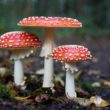Cannabidiol (CBD) and other cannabinoids are observed in cannabis and are the most examined cannabinoids. However, there are notable contrasts between them with regards to potency.
Cannabis has been utilized for centuries for both recreational and therapeutic purposes. Currently, cannabis is being studied for the treatment of several pathological conditions such as pain, nausea, vomiting, and cancer. It is one of the various broadly studied plants.
What Is CBD?
Cannabidiol (CBD) is a phytocannabinoid obtained from Cannabis species, which is without psychoactive action, with pain-relieving, calming, antineoplastic and chemopreventive exercises. Upon giving medication, CBD applies its anti-proliferative, anti-angiogenic and pro apoptotic action through different components, which likely don’t include motioning by cannabinoid receptor 1 (CB1), CB2, or vanilloid receptor 1.
CBD fortifies endoplasmic reticulum (ER) stretch and represses AKT/mTOR flagging, consequently actuating autophagy and advancing apoptosis. What’s more, CBD improves the age of responsive oxygen species (ROS), which additionally upgrades apoptosis. This specialist additionally upregulates the statement of intercellular bond particle 1 (ICAM-1) and tissue inhibitor of grid metalloproteinases-1 (TIMP1) and reduces the outflow of an inhibitor of DNA restricting 1 (ID-1). This restrains disease cell invasiveness and metastasis.
CBD may likewise initiate the transient receptor potential vanilloid compose 2 (TRPV2), which may expand the take-up of different cytotoxic operators in tumor cells. The pain-relieving impact of CBD is intervened through the authoritativeness of this operator and enactment of CB1.
What Are Other Cannabinoids?
THC is the primary psychoactive component of cannabis mostly in grandaddy purple feminized marijuana. It can be ingested, delivered sublingually, administered topically, inhaled as a vapor using CFX Vaporizer, smoked, infused into food, mixed in tea, or by bongs and has even been used intravenously for research and study. It connects to cannabinoid receptors in the brain, commencing to psychiatric effects, such as cognitive problems, as well as systemic results, such as tachycardia.
Keen cognitive dilemmas may be more frequent with THC, including spoken learning difficulty, working memory, and emotional processing. On the other hand, CBD may enhance cognitive function, including consciousness in people who utilize cannabis, but not in people with psychiatric or neurological ailments.
There are also remarkable indications that some acute cognitive concerns like emotional processing and working memory might be shunted by a combination of THC with CBD in neuropsychiatric patients as well.
How CBD Affect and Compared to Other Cannabinoids
Psychoactive effects are comparative in scope to the concentration or volume of THC and inversely proportional to those of CBD. This is significant in that many more modern cultivars have developed THC concentrations and lower CBD levels from white widow feminized genes and can be use via cheap dab pen, compared to earlier species of cannabis. Thus, more advanced studies may show more vital cognitive impairment among long-term cannabis users, because of this variation in the relative proportions. Continued use of marijuana with high THC, low CBD concentrations could create verbal and episodic memory impairment.
Fair excitement is observed differently from other people. Severe psychiatric symptoms are viewed with high doses of THC in schizophrenia, including delusions and hallucinations, as well as resistant psychosis, which cannot be treated using traditional antipsychotic drugs. Typically, THC creates some anxiety, which can become generalized and inordinate in severe cases.
THC is active when used to relieve morphine withdrawal syndrome. In contradiction, an equal dose of CBD showed a lack of effect.
This empirical evidence is backed by imaging studies, which confirm acute changes caused by THC and CBD in brain areas liable for these functions.
- THC attenuates activity in specific brain areas during a response inhibition task, but the opposite is exact with CBD.
- Other sections of brain connectivity and processing are also observed to be modified in opposite ways by THC and CBD.
- Visual processing is developed in the primary visual cortex, but attenuated in the occipital cortex, while CBD enhances it occipitally. Cerebellar action is also opposite following the presentation to THC and CBD during optical processing.
- On the other hand, with sensory incentive processing, THC decreases activity in the sensory cortex compared to CBD.
Does CBD Have Anti-Inflammatory Action?
CBD reduces the rate of generation and release of proinflammatory cytokines from microglial cells exhibited to bacterial lipopolysaccharide. Though CBD also reduces the activity of the NF-KB pathway, which is necessary for controlling the transcription of genes associated with inflammation. Also, it raises the level of activity of STAT3, a transcription factor that favors reverting the body to the anti-inflammatory state.
There is not much disparity in the point of pain relief with either CBD or other cannabinoids, vs. placebo.
Conclusion
There is a little, but an intriguing body of evidence, which requires it to be followed up to confirm that CBD pretreatment or co-administration could counter many of the effects of THC control on cognitive function in humans.
Texas Cannabis Today amplifies cannabis education and voices in Texas. For more cannabis, hemp, and CBD lifestyle news, follow Texas Cannabis Today on Instagram, Facebook, Twitter, and subscribe HERE for our cannabis newsletter.











